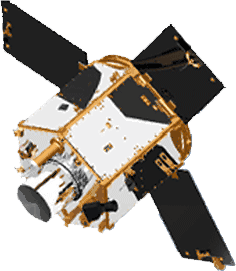Astronautic Technology Sdn Bhd
Astronautic Technology Sdn Bhd or better known as ATSB was established on 1 May 1995[1] and is wholly owned by the Minister of Finance Inc under the supervision of the Malaysian Ministry of Energy, Science, Technology, Environment and Climate Change (MESTECC)
| Government-linked company | |
| Industry | Aerospace |
| Founded | 1 May 1995[1] |
| Headquarters | 2, Jalan Jururancang U1/21, Hicom Glenmarie Industrial Park, 40000 Shah Alam, Selangor, Malaysia |
Key people | Ahmad Sabirin Arshad (CEO until March 2019)[2] |
| Products | RazakSAT, TiungSAT-1,InnoSAT, Pipit |
| Parent | Minister of Finance Incorporated |
| Website | www.atsb.my |
As a wholly owned company under the Ministry of Finance Inc. ATSB is mandated to focus on research and development in the area of design and development of space-qualified systems employing advanced and innovative technologies.[3][4]
Space projects

ATSB was entrusted with the design, development, launch and operation of TiungSAT-1, Malaysia's first microsatellite that was launched aboard a Dnepr rocket from Baikonur Cosmodrome, Kazakhstan on 26 September 2000.[5]
The technical expertise and experience gained in handling TiungSAT-1 served as a stepping stone for the second microsatellite, RazakSAT, which was successfully launched on 14 July 2009. RazakSat failed after a year, and never became fully operational.[6]
ATSB developed the cubesat InnoSAT-2 that was launched on 29 Nov 2018 by ISRO. InnoSAT-2 carries a dosimeter, a CMOS camera and an experimental reaction wheel. The satellite bus was locally developed.[7][8]
Other projects
Differential Global Navigation Satellite System or DGNSS was developed and deployed worldwide in response to the resolution A.915(22) by the International Malaysia Marine Department Organisation. The Peninsular Malaysia Marine Department has established a network of DGNSS broadcasting stations that are supported by monitoring stations and a national control center.[9][10][11]
Products
References
- "MOSTI".
- "ATSB-Key people".
- "International Astronautical Federation". Archived from the original on 2013-08-27.
- "About ATSB®". ATSB®. Retrieved 2018-12-24.
- "Third satellite launch this year for SSTL: TiungSAT-1 in orbit". www.spaceref.com. Retrieved 2018-12-24.
- "Archived copy". Archived from the original on 2014-10-14. Retrieved 2014-09-13.CS1 maint: archived copy as title (link)
- Goh, Deyana (2018-11-29). "ISRO's PSLV launches 31 satellites, including from Australia & Malaysia". SpaceTech Asia. Retrieved 2018-12-22.
- Clark, Stephen (29 Nov 2018). "Indian rocket launches 31 satellites". Spaceflight Now. Retrieved 18 Aug 2019.
- Subari, Mustafa Din (2008). "Update on Malaysian GNSS Infrastructure" (PDF). www.unoosa.org. Retrieved 2018-12-24.
- Singh, Karamjit (8 Mar 2019). "MALAYSIAN SPACE AGENCY CREATED TO MAXIMIZE EFFICIENCY AND IMPACT". Digital News Asia. Retrieved 18 Aug 2019.
- "Finance Ministry urges owners to claim almost RM10bil in unclaimed monies - Nation | The Star Online". www.thestar.com.my. Retrieved 2018-12-22.